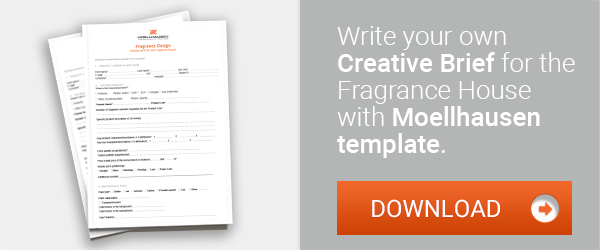
IFRA & EU: Main Features of the Fragrance Regulatory Environment
With more than 3,999 single fragrance materials[1] used within the fragrance industry, and a market estimation of $35.5 billion by 2019[2] —according to Perfumer & Flavorist—, the regulatory environment for fragrances is extremely complex
The EU estimates that between 1% and 3% of the population is allergic to some fragrance materials[3]. Public safety is certainly a key factor in the regulatory framework, but it is not the only one. In fact, legislation in this area is driven by a mix of different interests, ranging from business ones, consumerist ones (for example, the green movement), to national legislative agendas and global sustainability interests.
The nature of these interests often requires the convergence of opposing viewpoints. This makes the regulatory framework (environment and processes) complex to fragrance companies, which have to be constantly up-to-date and face new rules.
The aim of this article is to lead the reader to a better understanding of the fragrance regulatory environment, by providing essential information on specific issues, players and dynamics.
IFRA
IFRA stands for the International Fragrance Association and it is composed of IFRA EU, IFRA UK, IFRA NA (North America), IFRA LATIM (Latin-America) e IFRA APAC (Asia-Pacific). It is not a regulatory body but a voluntary membership organization that represents the interests of the fragrance industry at large, from raw materials producers to fragrance consumer products. IFRA does not make laws, it makes recommendations. The general consensus is that IFRA recommends, and EU regulates.
Who must comply with IFRA? Technically, only IFRA members are legally bound to comply with the IFRA code of practice (CoP), which lists the substances (both natural and synthetic) that it either prohibits or restricts to a percentage threshold in consumer products. IFRA is also responsible for setting purity requirements for some fragrance ingredients.
IFRA recommendations for restricted or banned substances are based on the evaluation of an independent research institute called RIFM (Research Institute for Fragrance Materials)[4]. According to IFRA RIFM QRA Information Booklet (Version 7.1- Revised July 9, 2015):
“Based on the chemical, cellular and molecular understanding of dermal sensitization, it is possible to conduct an exposure-based Quantitative Risk Assessment (QRA) to determine safe use levels of fragrance ingredients in a variety of consumer product types.
In a brief overview, key steps of the QRA process are the determination of benchmarks for the induction potential (No Expected Sensitization Induction Level or NESIL); application of sensitization assessment factors (SAF) and calculation of consumer exposure (CEL) through product use. Using these parameters, an acceptable exposure level (AEL) can be calculated and compared with the consumer exposure level (CEL). The ratio of the AEL to CEL must be favorable to support the safe use of the skin sensitizer. This ratio must be calculated for the skin sensitizer in each product type.
Based on RIFM’s Expert Panel recommendation, RIFM and IFRA formally adopted beginning with the 40th Amendment to the IFRA Code of Practice in May 2006 the QRA approach, refined for fragrance ingredients identified as dermal sensitizers, as the core strategy for primary prevention of dermal sensitization to these materials in consumer products. This methodology is now being used to determine global fragrance industry product management practices (IFRA Standards) for potentially sensitizing fragrance ingredients on an ongoing basis.
It mainly affects global fragrance suppliers and users in terms of the identification of acceptable levels of fragrance ingredients in different product types and how this will be managed on a practical basis through grouping of certain product types into product categories with specific limitations.”[5].
IFRA: Impact and Influence
As previously explained, IFRA is charged with both safeguarding public health and representing legal and economic interests of its members, most of whom are also in competition with each other. The role of IFRA is complex, quite difficult and delicate from many points of view, here included the clear, correct and comprehensive information towards its stakeholders; misunderstanding can be easy in case of lack of information. It is important, at this point, to analyze the impact and influence IFRA has within the fragrance industry.
If IFRA does not make the law, then why do the producers comply almost uniformly with its recommendations?
The reasons why IFRA yields such influence are multifold:
- Pre-Regulatory Compliance: IFRA recommendations —not laws— are considered as industry standards and “good manufacturing practices”. Fragrance companies and producers have been led to a “self-regulation system”. Even if a producer is not a member, it will follow IFRA recommendations as a precautionary measure.
- Safety Assessment Protocols: For any product classified under the EU Cosmetics Regulation and to be sold or marketed across EU, an EU Cosmetic Product Safety Report must be completed. The EU Cosmetic Product Safety Report is the first step of the process to guarantee that the finished product is safe for use. In fact, the producer must make some tests on his cosmetic product, in order to verify its safe use. According to EU Cosmetic Regulation, all safety data and information on cosmetic product has to be notified on CPNP (Cosmetic Product Notification Portal) website. Safety assessors will also request evidence that the product is IFRA-compliant, as part of the assessment protocol. Thus, being IFRA-compliant is a de facto requirement for selling fragrance goods in the EU market, whether one is a member or not.
- Protection of Trade Secrets: Under safety assessment protocols described above, a safety assessor might demand access to the fragrance formula of the product to check individual ingredient thresholds. However, generally, no producer is keen on revealing his fragrance formula. So, the producer writes an Exchange Information Sheet, where to claim that his specific product is compliant with IFRA and is safe when created with a specific fragrance at a specific dosage.
- Protection Against Liability: Generally speaking, the compliance with IFRA is a necessary but not sufficient liability condition. In fact, IFRA does not protect its members, and is not responsible for any damages caused by any fragrance company. IFRA leaves the full responsibility to the producers, who must check the compliance of their products not only with IFRA, but also with the Legislation of the single Countries where the products are launched.
- Membership: Lastly, there’s strength in numbers. IFRA influences because most of the world’s largest fragrance suppliers, producers and brands are members of the organization, and therefore abide by its guidelines and code of practice.
European Union
EU is a law-making institution. If a company trades in or with the EU, then it is legally obliged to comply with local laws and regulations. About fragrances, there is no sector or product specific EU legislation, but fragrances are affected by many cross-genre regulations:
- Regulations for specific end products categories (for example cosmetics, detergents, etc...). However, it is important to note that not all end product categories have their own regulations, like air fresheners.
- The Classification, Labeling and Packaging (CLP) Regulation, which is about classification, labelling and packaging of substances and mixtures (compounds) and is applied in every field in which chemicals and chemical compounds are concerned.
- REACH Regulation
- Compliance with IFRA recommendations and “self-regulation” system within every single country and every single fragrance company.
- Among the materials that are today red-flagged as allergenic, 26 fragrance substances are “eligible to cause skin sensitization and it is mandatory to clearly indicate on the label if their presence in the cosmetic product is above the threshold of 0.001% for leave-on products and 0.01% for rinse-off products”. The EU is currently in consultation with the SCCS, however, to increase this number from 26 to 82 (54 chemicals and 28 naturals)[6].
What does EU legislation mean for fragrance producers, suppliers and brands?
First of all, producers cannot use materials that contain EU-banned substances in their formula. These prohibited substances currently include hydroxyisohexyl 3-cyclohexene carboxaldehyde (HICC), Lyral —the key odorant to make a muguet (lily of the valley) accord— and both chloroatranol and Atranol —the main allergenic component of oakmoss (Evernia prunastri and Evernia furfuracea).
The banning of these substances by the European Commission has caused concern in the fragrance community, regarding the effect on beloved fragrances. However, the big fragrance producers have been aware of the “endangered status” of these materials for long and have already succeeded in phasing out these substances or replacing them with new developed materials.
As a matter of facts, reformulation is a key activity to maintain and re-launch products on the market. It can be driven by continual improvement policies, and is sometimes trigged by new regulations.
As a successful example, Givaudan has recently replaced Lyral with an in-house developed captive. An excerpt from a Givaudan blog post reads: “Being aware of the threat allowed us to work on a replacement molecule, Mahonial™. We researched this new synthetic for three years and it was successfully phased in as Lyral was being phased out. It enabled fine fragrance and consumer products perfumers to seamlessly continue their floral, lily-of-the-valley creations.”[7]
Historically, the EU has encouraged transparency (labeling, ingredients lists) over the wholesale banning and restriction of materials. In the Cosmetics Directive, it claims "containers or packaging must bear written information" on all "ingredients, i.e. any substance or mixture intentionally used in the product during the process of manufacturing."
But labeling comes with its own set of issues. First, there is the question of space. A list of 100+ ingredients does not fit easily on a little bottle of perfume. Currently, manufacturers are discussing options with the EU that include bar code scanning, apps where consumers can download the list, or printing a leaflet to be inserted in the box. The second issue is trade secrets. The full disclosure of ingredients puts pressure on the fragrance industry to reveal secrets about formulas that it would rather not.
SOURCES
[1] http://www.ifraorg.org/Upload/Docs/Transparency%20list.pdf
[2] http://www.perfumerflavorist.com/networking/news/company/Flavor--Fragrance-Market-to-Reach--289144841.html
[3] http://ec.europa.eu/health/scientific_committees/docs/citizens_fragrances_allergens_en.pdf
[4] http://www.rifm.org/about.php#.WliHW9Jl_IU
[5] http://www.ifraorg.org/Upload/DownloadButtonDocuments/c7b29dc8-19d2-4ffd-8aae-bb35ec2ae95b/IFRA RIFM%20QRA%20Information%20booklet%20V7.1%20(July%209,%202015).pdf
[6] http://ec.europa.eu/health/scientific_committees/docs/citizens_fragrances_allergens_en.pdf
[7] https://www.givaudan.com/sustainability/tougher-regulations
Although the information contained in this document is presented in good faith and believed to be correct, Moellhausen makes no representations or warranties as to the completeness or accuracy of the information. This document is provided on an “as is” basis. No representations or warranties, either express or implied, of fitness for a particular purpose are made herein with respect to information or products to which information refers. Moellhausen shall not be liable for any irresponsible, improper or illegal use, direct or indirect, of the information or the products represented herein and it shall not be liable for any damage arising from any use in connection therewith.
©Copyright 2018, by Moellhausen S.p.A – All Rights Reserved. Any review, retransmission, spreading or other unauthorized use of, or taking of any action in reliance upon, this information is prohibited.




